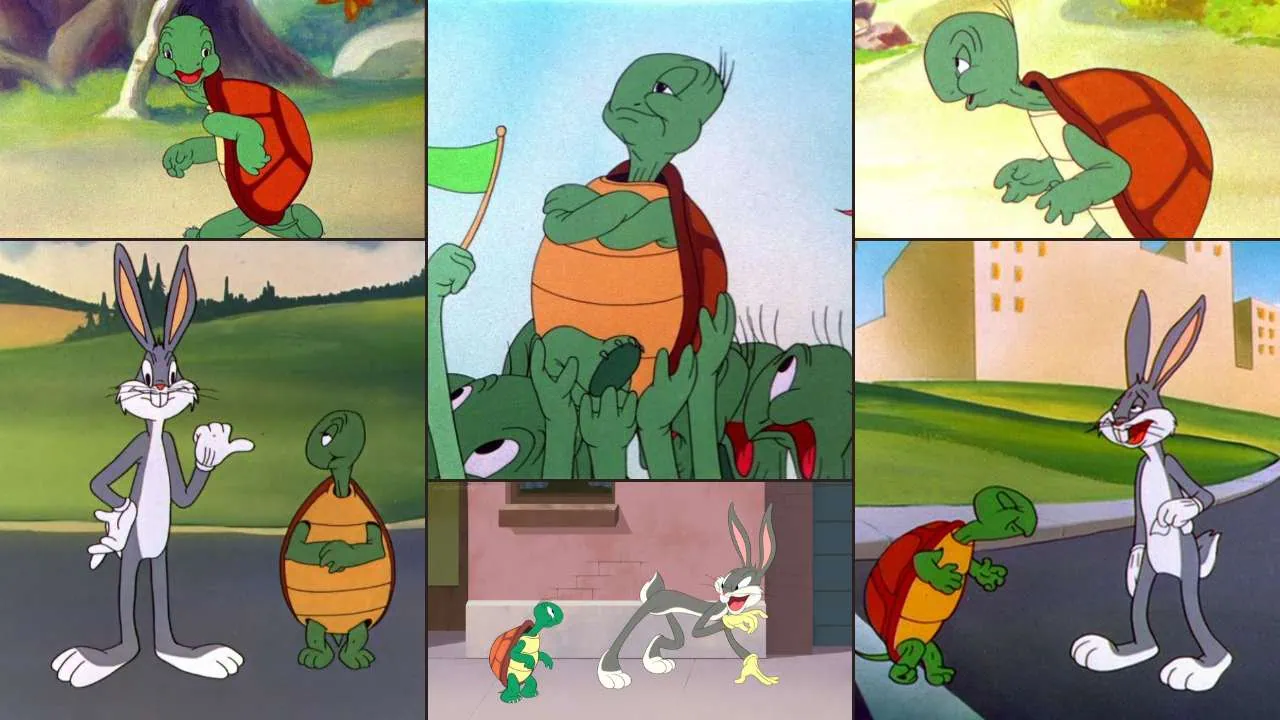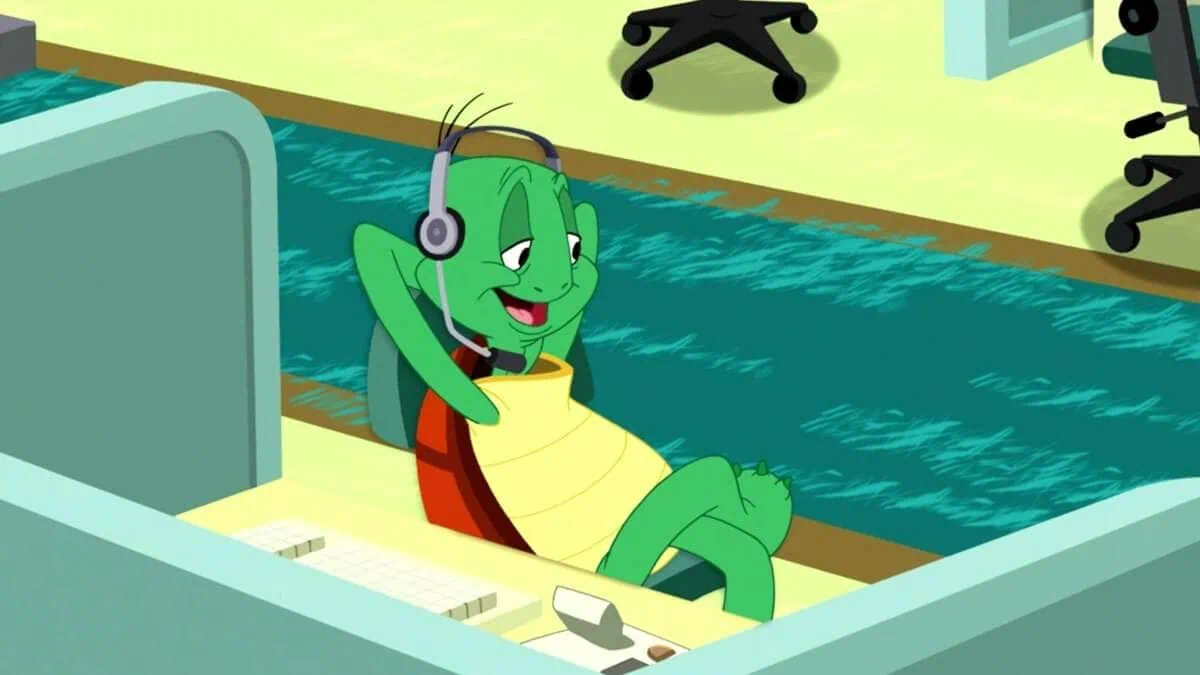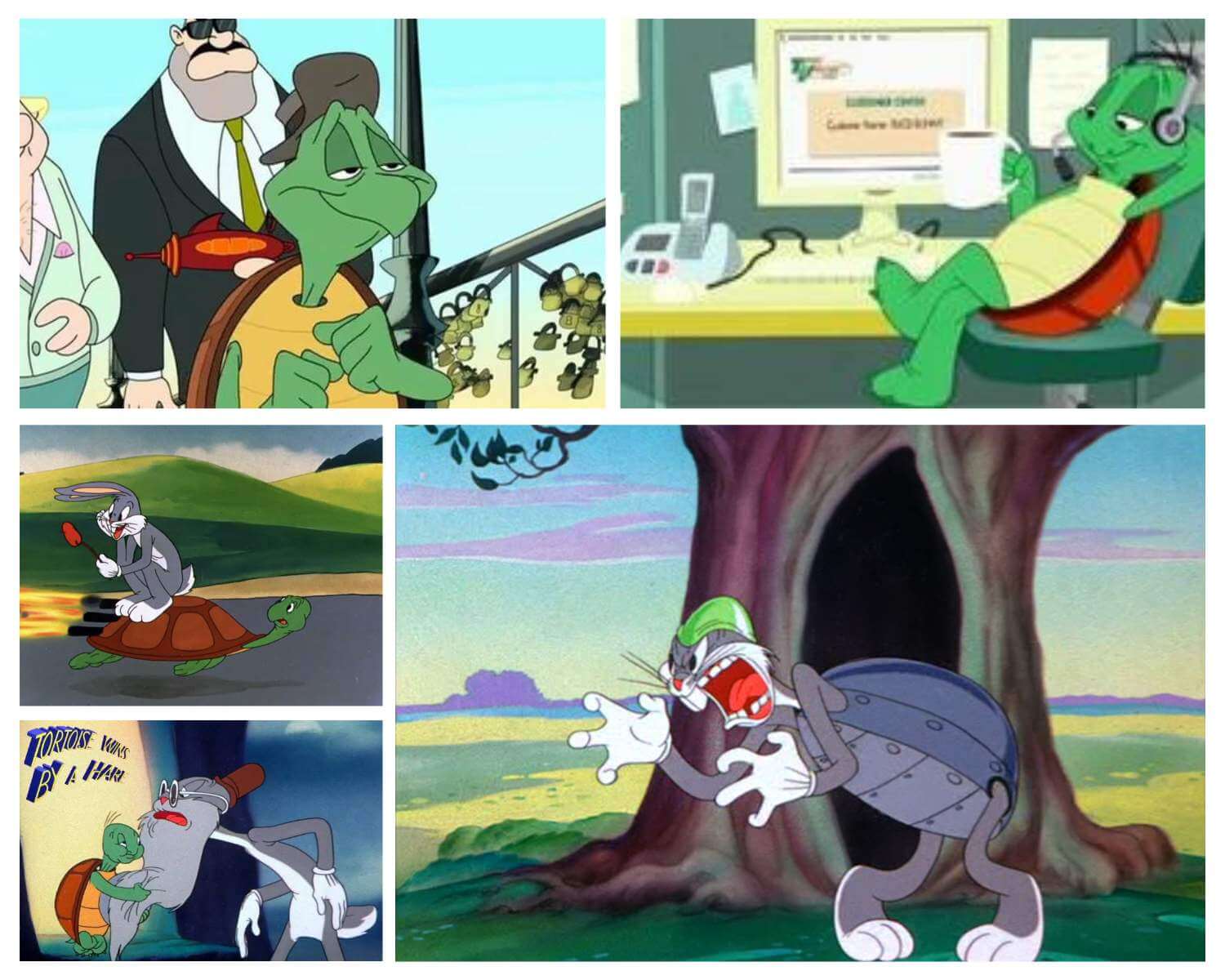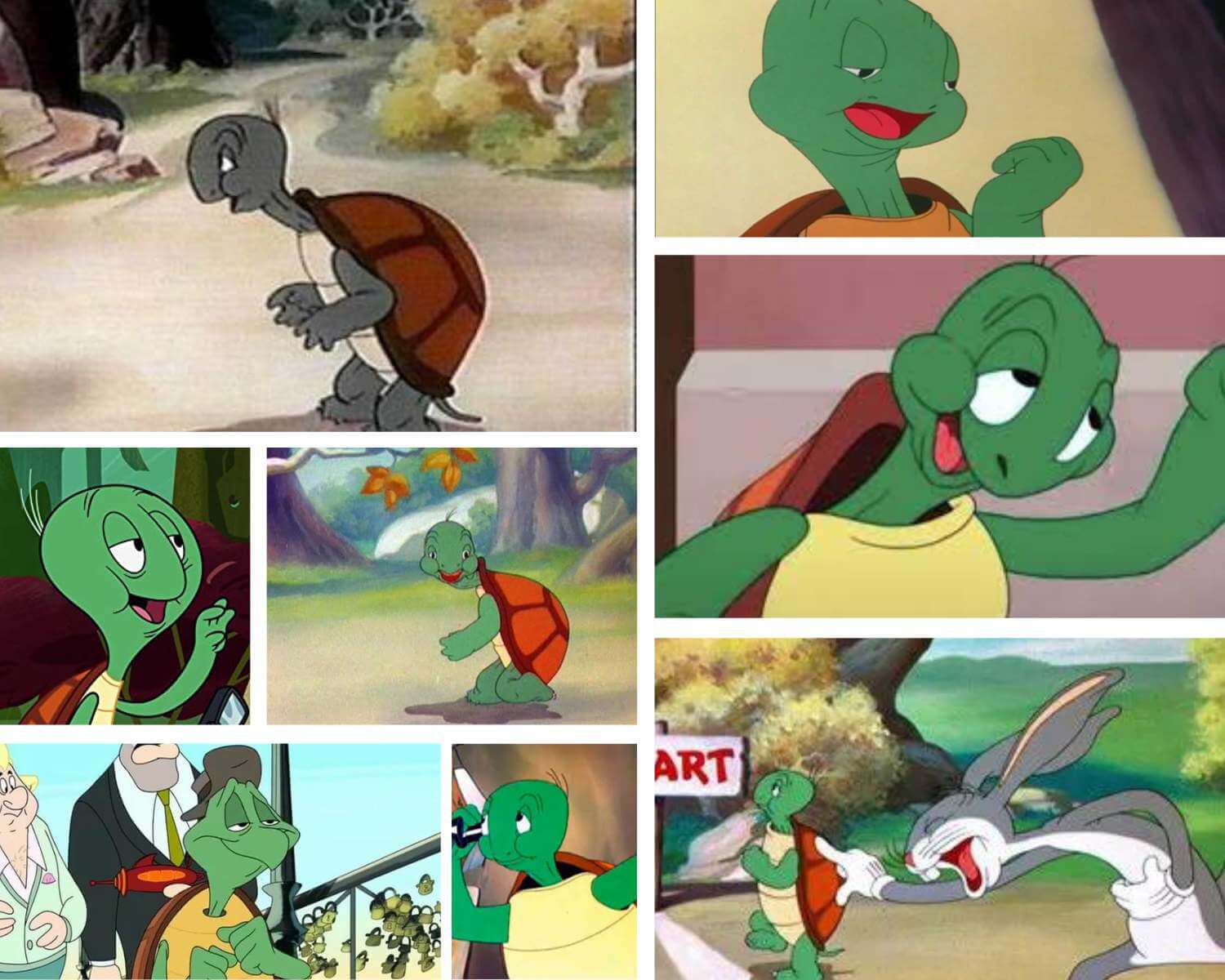Warner Bros. features Cecil Turtle, a captivating cartoon character, in their Looney Tunes and Merrie Melodies animated films.
In the Looney Tunes universe, Bugs Bunny and Daffy Duck often steal the spotlight with their quick wit.
Yet, an unsung hero, Cecil Turtle demonstrates that brainpower and cunning can beat speed and agility.
In his face-offs with the speedy Bugs Bunny, this strategic turtle highlights the strength of smart thinking and tactics.
Who Is Cecil Turtle?
In this article, we’ll explore the enchanting world of Cecil Turtle, delving into his character traits, most memorable moments, and the life lessons we can learn from this sly reptile.
First appearance: Tortoise Beats Hare (1941)
Creators: Tex Avery, Friz Freleng, Bob Clampett
Species: Turtle
Cecil Turtle: The Master Strategist

Ever felt that a challenge was insurmountable? Well, the tale of Cecil Turtle, one of the lesser-celebrated green characters of Looney Tunes, is all about defying odds.
Introduced during the Golden Age of American animation, this witty little turtle consistently managed to outsmart the “fastest mouse in all Mexico,” Speedy Gonzales, and even the wily Bugs Bunny!
What stands out about Cecil is not his flashy design or quirky gimmicks but his consistent ability to remain calm under pressure.
While Bugs Bunny and Speedy Gonzales are frenetically racing about, Cecil adopts a slow and steady strategy. He’s a testament to the adage: “Slow and steady wins the race.” Cecil’s unassuming nature underscores the element of surprise, reminding us all that heroes come in all shapes, sizes, and speeds.
Cecil vs. Bugs Bunny

Cecil Turtle’s most memorable moments come from his encounters with the quick and clever Bugs Bunny. In their classic matchups, Bugs Bunny is often overconfident in his ability to outwit and outrun Cecil. However, Cecil consistently proves he can hold his own against the fast-talking hare.
One of their most iconic encounters takes place in the 1941 short “Tortoise Beats Hare,” which is loosely based on Aesop’s fable “The Tortoise and the Hare.”
In this episode, Cecil enlists the help of his identical-looking turtle friends to trick Bugs Bunny during a race.
This clever strategy helps Cecil secure a victory and leaves Bugs scratching his head, wondering how such a slow-moving creature could have outsmarted him.
More Than Meets the Eye

Many might overlook Cecil Turtle amidst the sea of iconic cartoon characters in the Looney Tunes universe. However, delve a little deeper, and it’s clear that Cecil offers a world of wisdom.
His tales aren’t just slapstick animations but resonate with the timeless message of determination, strategy, and resilience. Whether you’re an adult or a child, there’s something inherently relatable about the turtle who never gives up, no matter the odds.
Life Lessons from Cecil Turtle

Cecil Turtle’s adventures offer valuable life lessons for audiences of all ages, including:
The importance of strategy
Cecil’s success stems from his ability to think ahead and develop a plan, demonstrating the importance of strategy in overcoming challenges and achieving goals.
Never underestimate your opponent
Cecil’s adversaries, particularly Bugs Bunny, often dismiss him due to his slow and unassuming appearance. However, Cecil’s resourcefulness and intelligence consistently prove that underestimating others can lead to unexpected setbacks.
Slow and steady wins the race
Cecil embodies the adage that “slow and steady wins the race.” His measured, calculated approach to solving problems and overcoming obstacles emphasizes the value of patience, persistence, and careful planning.
Cecil Turtle’s Influence on Animation

Cecil Turtle exemplifies the Looney Tunes creators’ ingenuity, showing how quirky characters can outsmart adversaries using intelligence and strategy.
This concept influences other animations, such as Wile E. Coyote, Road Runner, and Tom and Jerry, highlighting brains versus brawn dynamics.
Additionally, Cecil reminds animators and storytellers to challenge conventions and create diverse characters that defy expectations. By deviating from traditional tropes, animators can produce memorable, engaging stories that captivate and entertain audiences.
The Timelessness of Cecil Turtle
Although Cecil Turtle has limited appearances in the Looney Tunes series, his impact is powerful. Cecil’s character conveys a timeless message: multiple paths can lead to success, and the most obvious one may not always be the best.
This message continues to resonate with audiences, solidifying Cecil Turtle’s status as a beloved figure in the animation world.
In recent years, Cecil has appeared in various Looney Tunes spin-offs and adaptations like “The Looney Tunes Show” and “New Looney Tunes.” These appearances remind us of his enduring appeal and the valuable lessons he teaches.

Cecil Turtle may not be the most prominent character in the Looney Tunes universe, but his impact on animation and his influence on other characters cannot be understated.
The unique dynamic between Cecil and Bugs Bunny and the timeless lessons his character teaches make him an unforgettable figure in animation.
As we continue to enjoy the adventures of Looney Tunes characters, Cecil Turtle remains a shining example of the power of wit, strategy, and perseverance in overcoming even the most formidable adversaries.
Other Appearances
The Warner directors retired Cecil after his third face-off with Bugs. However, Cecil occasionally pops up in later projects. You can spot him in the 1996 film Space Jam, cheering from the stands during the game.
He also appears in its 2021 sequel, Space Jam: A New Legacy, where Bugs recalls him exiting Tune World alongside Charlie Dog. In the 2003 DVD Looney Tunes: Reality Check, Joe Alaskey lends his voice to Cecil. Cecil also graces an episode of The Sylvester and Tweety Mysteries with Frank Welker voicing him.
The Looney Tunes comic book features him in several issues. He appeared strikingly in the 1954 Warner Bros. Animation Looney Tunes short, Devil May Hare. Robert McKimson directed this episode where Bugs faces off against the Tasmanian Devil, marking the latter’s debut.
Cecil the Turtle Tortoise Beats Hare 1941